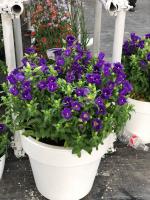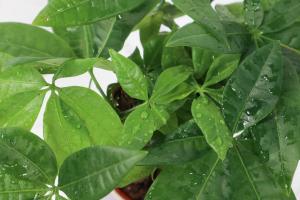When to Stop Watering Outdoor Pot Plants
Watering outdoor pot plants requires a little bit of finesse, especially when it comes to determining when to stop. Overwatering can lead to root rot and other soil-borne diseases, while underwatering can cause stunted growth and wilted leaves. In this article, we'll explore a few guidelines to help you determine when to stop watering your outdoor pot plants.
1. Consider the Climate and Weather
A good place to start is by taking into account the climate and weather patterns in your area. If you live in a hot and dry place, your plants will likely need more water than if you live in a cool and humid environment. Similarly, if you're experiencing a particularly dry spell, you may need to water more frequently than usual until there's enough moisture in the soil.
One way to check if your plants need water is by sticking your finger about an inch into the soil. If it feels dry, it's time to water. However, if it's still moist, you can hold off for a bit longer.
2. Look for Signs of Water Stress
Another way to determine when to stop watering your outdoor pot plants is by looking for signs of water stress. This includes wilted or drooping leaves, yellowing or browning of leaves, and the soil pulling away from the sides of the container. These are all indicators that your plants need water and are under stress.
If you notice any of these signs, be sure to water your plants thoroughly and wait until the soil is dry before watering again.
3. Be Mindful of the Type of Plants You Have
The type of plants you have in your outdoor pots can also influence how often you need to water them. For example, succulents and cacti require far less water than tropical plants or herbs. Understanding the specific needs of your plants will help you determine when to water them and how much to give each time.
If in doubt, research the type of plants you have or consult with a gardening expert for advice.
4. Avoid Overwatering
Overwatering is a common mistake that can harm outdoor pot plants. It's important not to let water sit in the bottom of the container, as this can lead to waterlogged soil and root rot. Always ensure that your pots have proper drainage holes, and consider using a saucer or tray to catch excess water.
In addition, be sure to avoid watering your plants during the hottest part of the day, as this can cause water to evaporate quickly and hinder your plant's ability to absorb it. Instead, water in the early morning or late afternoon.
Conclusion
Knowing when to stop watering your outdoor pot plants requires a combination of careful observation and understanding of your plants' needs. Keep an eye on the weather and your plants' behavior, and adjust your watering schedule accordingly. By following these guidelines, you can ensure that your plants stay healthy and vibrant all season long.

 how many times do yo...
how many times do yo... how many planted tre...
how many planted tre... how many pine trees ...
how many pine trees ... how many pecan trees...
how many pecan trees... how many plants comp...
how many plants comp... how many plants can ...
how many plants can ... how many plants and ...
how many plants and ... how many pepper plan...
how many pepper plan...
































